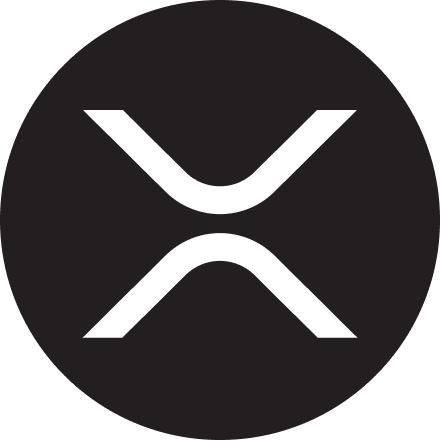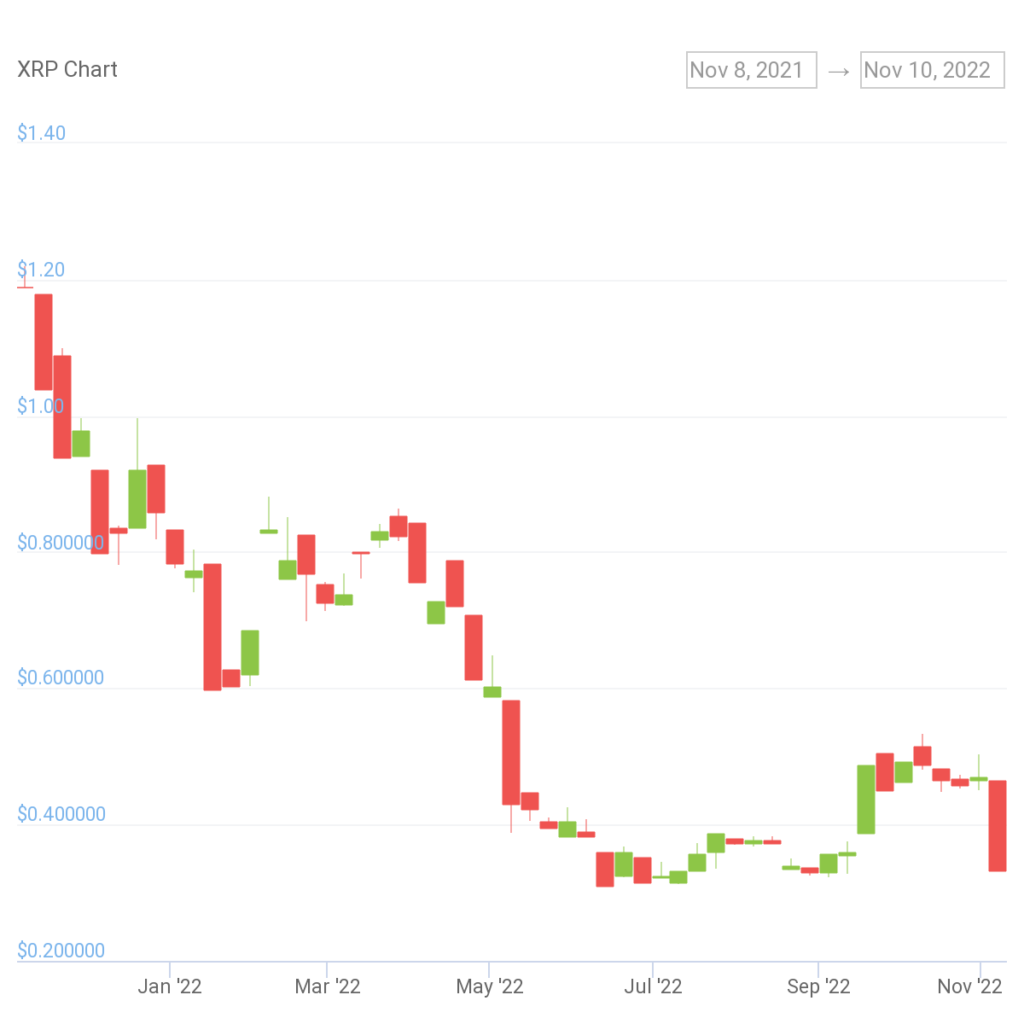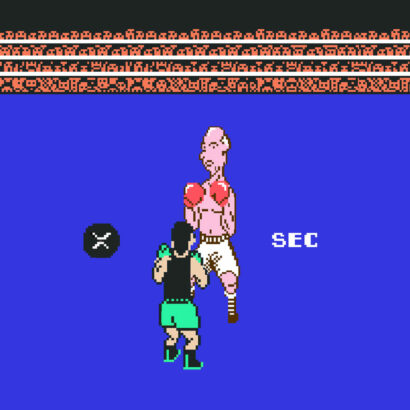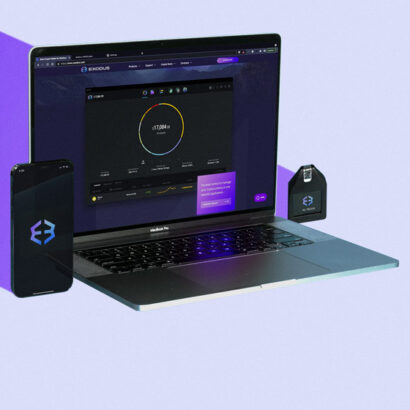Ripple is a blockchain-based digital payments network and protocol that comes with its own dedicated cryptocurrency, XRP.
Ripple was created to succeed SWIFT, a well-known money transfer network, or to take the role of the layer that settles disputes between sizable financial institutions. The goal of Ripple was to drastically reduce costs by moving transactions from centralized, controlled, and closed databases to a more open infrastructure.
XRP is used to complete transactions on the network.
In the US, you can purchase XRP on many of the major crypto exchanges (Kraken for example) and use it to fund Ripple network transactions, as an investment vehicle, or as a medium of exchange for other cryptocurrencies.
Transactions on Ripple are trustless, quick, and affordable, and prove beneficial even for cross-border transactions. In this way, XRP proves to be one of the most useful cryptocurrencies for applications across the financial services landscape.
Key Takeaways
- Ripple and XRP are two separate things: Ripple is a centralized FinTech company that creates products for international payments.
- XRP is a stand-alone digital asset.
- Ripple is an open-source protocol that enables quick, inexpensive and environment-friendly crypto transactions.
- Chris Larsen and Jed McCaleb co-founded Ripple, and launched it in 2012.
- Ripple was designed as an alternative to SWIFT
- Ripple is a centralized network that uses a collection of validating servers owned by banks to confirm transactions rather than mining on a blockchain.
- The Ripple payment system is meant primarily for banks (individual investors can speculate on the price of XRP). The XRP Ledger is very restrictive about who can contribute to transaction validation and network security.
- XRP is one of the most valuable blockchain-based assets by market capitalization.
- The XRP Ledger offers a wide range of payment-related applications and use cases, including micropayments, DeFi, and, soon, NFTs. Developers use the XRP Ledger along with its native coin, XRP, to build remittance and asset tokenization solutions that address inefficiencies. The XRP Ledger has five main uses: payments, tokenization, DeFi, CBDCs, and stablecoins.
A Brief History
Ripple goes back to when it was conceptualized by Ryan Fugger as RipplePay in 2004 – a website that allowed its users to lend money to members in their community. While it was not a cryptocurrency or blockchain platform at the time, it did exist as a FinTech platform prior to Bitcoin. BTC’s mysterious creator Satoshi Nakamoto even made a passing reference to Ripple in an email once.
In 2011, programmer Jed McCaleb began working on the Ripple blockchain and within a year he managed to assemble a team, located investors, and discussed utilizing the RipplePay network with Fugger, to which Fugger agreed to hand over command of RipplePay.
In the same year, Ripple and its cryptocurrency XRP were launched. The company was initially known as NewCoin, but subsequently changed its name to OpenCoin, and eventually Ripple. They soon formed alliances with several key financial institutions.
In 2019, Ripple announced that its RippleNet payment network was being used by more than 300 financial institutions across 45 countries.
Ripple has evolved into a peer-to-peer, open-source, decentralized infrastructure that enables smooth transactions and currency conversions. The platform has established itself as a leading payments network used by a number of well-known banks and financial services organizations across the globe.
In 2020, the SEC launched a lawsuit against Ripple, claiming that XRP was sold as an unregistered security. Ripple and many experts do not agree and this case has garnered a lot of attention as a result. It’s possible the resolution could happen by the end of 2022 and the results would likely set a precedent for the crypto industry as a whole.
XRP vs the SEC
The SEC sued Ripple on December 22, 2020 for selling $1.3 billion in unregistered securities using its XRP token. The SEC alleges that Ripple executives engaged in illegal securities trades in 2013 when they utilized XRP tokens to raise money while the cryptocurrency was still an unregulated currency. The notion has been refuted by Ripple, who maintains that XRP is not a security.
Ripple also cited a statement by Robert Hinman, the SEC’s former director of corporate finance, who labeled Ethereum and Bitcoin as non-securities. Due to their sufficient decentralization, the company claims that other cryptocurrencies would also not be regarded as securities, like XRP.
Briefs for summary judgment in favor of each side have been submitted and answered. According to the timing opinions of the media and Ripple reps, the litigation will probably be resolved in the first quarter of 2023 or possibly by the end of 2022. This makes the upcoming months an interesting time for investors looking at XRP, as the judgement seems tilted to their favor.
Benefits of Ripple
Faster than Conventional Banking
Ripple addresses some of the major problems with conventional banks through its excellent features. On the Ripple network, transactions are settled in a matter of seconds, despite the platform handling millions of transactions regularly. This contrasts with banks, which can require days or weeks to finish a wire transfer.
Low Fees Compared to other Cryptocurrencies
Besides, in comparison to the high costs imposed by banks for making cross-border payments, the cost of transactions on Ripple is extremely low. The minimum transaction cost required for a normal transaction is set as low as 0.00001 XRP. This may surprise even seasoned cryptocurrency users, since the biggest two cryptocurrencies by market capitalization, Bitcoin and Ethereum, both have average transaction fees that frequently exceed two digits, with all-time highs exceeding $50.
Unique Consensus Mechanism
Instead of the conventional proof-of-work or proof-of-stake mechanisms, Ripple relies on a network of “unique nodes” to effectively agree on which transactions the network can handle. Permissioned servers keep a distinct Node List that aids the network’s Federated Byzantine Agreement consensus method in reaching consensus.
Anonymity and Accessibility
The XRP Ledger is controlled by a network of more than 150 validators worldwide. Although the history of financial transactions is publicly accessible and recorded on a blockchain, no specific person or company’s ID or account is tied to the data.
Additionally, XRP uses RippleX, which gives programmers and business owners access to tools and services built on top of the XRP Ledger so they may incorporate blockchain technology into their applications. As with other cryptocurrencies, XRP itself can be utilized on-chain.
There is a catch here, however.
Several experts claim that Ripple is fundamentally so different that it is even the antithesis of the very concept of cryptocurrencies. They call it a “banker’s coin” since it practically operates as a centralized system.
For instance, information on Ripple can be de-anonymized because every transaction is recorded in a public ledger. Transactions are powered by a “centralized” blockchain to make them more reliable and speedy. Users are free to set up their own servers, but Ripple alone can choose to include them in their trusted network of “unique nodes” that take part in consensus-making. XRP tokens may also be issued and distributed by the corporation on will. This is fairly unique in the cryptosphere, and many in the space are highly critical of it.
Scalability
The XRP Ledger routinely processes 1,500 transactions per second, seven days a week. This demonstrates the scalability of transactions. A software framework called Interledger Protocol, which is funded in part by Ripple, intends to make it easier to conduct transactions between cryptocurrencies and bank ledgers even further.
Environment-Friendly
XRP Ledger blockchains use 61,000 times less energy than proof-of-work blockchains.
How Does Ripple Work?
Before delving into the working of Ripple, it is important to understand the challenges and intricacies in cross-border payments. International transactions generally involve third parties, which makes them costlier, slower, and externally controlled. It might take days or even weeks to transfer data using conventional cross-border payment systems. Ripple, ever since its launch in 2012, is on a mission to change that.
Ripple Payments Blockchain Platform
The Ripple network doesn’t operate on either a proof-of-work (PoW) mechanism like Bitcoin or proof-of-stake (PoS) mechanism like Ethereum. Instead, it employs a consensus protocol involving multiple bank servers.
Ripple essentially serves as a digital hawala service, using a trust chain called “Gateway” between the two parties involved in a transaction. The Gateway serves as the credit mediator for the Ripple network, facilitating sending and receiving of money, managing liquidities, and exchanging currencies. Registration and creation of a Gateway is open to any individual or business.
To be validated, each transaction must be approved by the vast majority of “validators”, which in Ripple’s case are various bank-owned servers. Ripple thus uses a consensus-based approach where validators compare proposed transactions to the most recent version of the XRP ledger to ensure their legitimacy.
This consensus seeks to increase the integrity of the system, such as by preventing double-spending. For instance, all but the first transaction on Ripple get automatically erased if a user opens a transaction with several gateways but with the same transaction amount.
Consensus among individual distributed nodes determines which transaction was created first. This is the reason the Ripple platform is referred to as decentralized – there is no central authority that selects who can establish a node and verifies transactions.
Although the history of financial transactions is publicly accessible and recorded on a blockchain, no specific person or company’s ID or account is tied to the data. However, the information can be de-anonymized because every transaction is recorded in a public ledger (the blockchain).
RippleNet
One of the many products of the Ripple platform, RippleNet uses blockchain technology to create a unified global payments system for financial institutions around the world, enabling seamless cross-border transactions.
Users supposedly have access to the network through an application programming interface (API), which makes international money transfers quicker and less expensive than with conventional means. Using the XRP token’s worldwide power, the decentralized network claims to execute payments in just three seconds.
Technically speaking, RippleNet is not a blockchain in and of itself, but rather a collection of applications that utilize the capabilities of the XRP network. That said, the XRP blockchain stores a record of every transaction that uses RippleNet products.
RippleNet eliminates the requirement to pre-fund accounts using a service called On-Demand Liquidity, which sources liquidity for cross-border transactions using XRP. The XRP-powered solution from Ripple enables network users to process payments with real-time settlement and boosts payment efficiency and certainty.
RippleNet is used by major participants in remittances and banking, including:
- Santander
- Bank of America
- SBI Remit
- American Express
- Banco Rendimento
Supported by over 55 countries, XRP is compatible with more than 120 fiat currencies, ensuring that cross-border payments be made with ease.
XRP the Token
XRP is the digital currency offered by Ripple.
It serves primarily as a medium of exchange for other currencies on the platform. But that’s not all. Ripple has always advocated multiple use cases for XRP, aimed at “building technology to help unleash new utility for XRP and transform global payments,” as per Ripple’s website. The site also claims that XRP is “faster, less costly, and more scalable” compared to other digital assets.
XRP is generated using a crypto ledger akin to blockchain technology, and is federated by financial institutions and payment processor networks globally. It powers breakthrough innovations across the payments arena using the XRP ledger.
XRP cannot be mined like BTC because Ripple does not support mining operations. The issue and distribution of XRP is controlled directly and solely by Ripple, whereas for cryptos like BTC, individuals who have connected their computers to a vast worldwide mining and data distribution network can create new Bitcoins after successful mining.
That being said, it is technically possible to “mine XRP indirectly” by using other cryptocurrencies. Put simply, you could mine BTC or ETH and then exchange them for XRP on trusted cryptocurrency exchanges. This is not something the average retail investor should be attempting mind you.
The Future
Ripple made a startling surge at the beginning of 2017 and 2018 and briefly overtook Bitcoin as the second most capitalized cryptocurrency in the world. Following this expansion, the exchange rate and market capitalization of XRP suffered a protracted and agonizing drop. The early 2021 cryptocurrency market boom enabled XRP to bounce back and reclaim its footing, and it has managed to do so despite 2022’s crypto winter.
The XRP Ledger has been developing its own sidechain, which has recently started to go through testing. Due to its compatibility with the Ethereum Virtual Machine, the sidechain aims to increase the interoperability of the blockchain (EVM). This enables programmers to use the Ripple Ledger to execute Ethereum smart contracts.
Despite its highs and lows, the cryptocurrency XRP continues to be a favorite of institutional and individual investors alike. At the same time, the Ripple crew appears to have a strong commitment to their product and actively strives to improve and update it. All these factors make it seem like Ripple has bright days ahead of it.
Add to that its functional benefits: XRP is a far more effective form of exchange and payment even though it lags behind Bitcoin in terms of market capitalization and popularity. Compared to BTC transactions, XRP transactions are cheaper, quicker, and use less energy. While it may not be able to overtake BTC’s user base and brand, XRP is technically stronger and has carved a niche for itself.
If Ripple succeeds, XRPIt might end up being the coin that most people associate with fast, cheap, seamless crypto payments.
Conclusion
The money transfer network Ripple and its digital currency XRP enable transactions to complete a lot quicker than with Bitcoin or Ethereum. You can carry out a number of transactions at near-instant speeds with nothing more than an internet connection.
Because transactions are processed by several nodes, Ripple functions similarly to blockchain. Sending a transaction, giving it a single value, sending it to a shared public database, validating servers or nodes sharing the information, and – if different servers report a match – authorizing and processing the transaction are all steps in the payment process.
Numerous developers take advantage of the XRP ledger’s distinctive features, including its quick and effective consensus mechanism and censorship-resistant transaction processing. These developers are creating cutting-edge projects and apps using the XRPL for a variety of blockchain use cases, such as asset tokenization, online gaming, asset custody, NFTs, and DeFi.
Overall, with such wide-ranging use cases, advantages of speed and lower costs, and a consensus mechanism that is more decentralized and environment-friendly compared to some of the world’s leading cryptocurrencies, Ripple has truly established itself as an industry leader.
Official Links
Website: Ripple
Social:
https://twitter.com/Ripple?s=20&t=oWSlnxHWLokr1e5UeRz1EQ
Traditional global payment systems are far from efficient. In this video, CEO @BGarlinghouse details how we're removing barriers for #crypto in business. #CryptoMeansBusiness
Click play. ▶️ https://t.co/gHa1ybzc3u pic.twitter.com/Djxshv9yUR
— Ripple (@Ripple) November 4, 2022
Currency Information
Sources
XRP Utility for the New Global Economy —Ripple.com
The Complete Guide to Understand What is Ripple —Simplilearn
Ripple Blockchain: A Detailed Overview —Blockchain Council
What is Ripple —The Motley Fool






